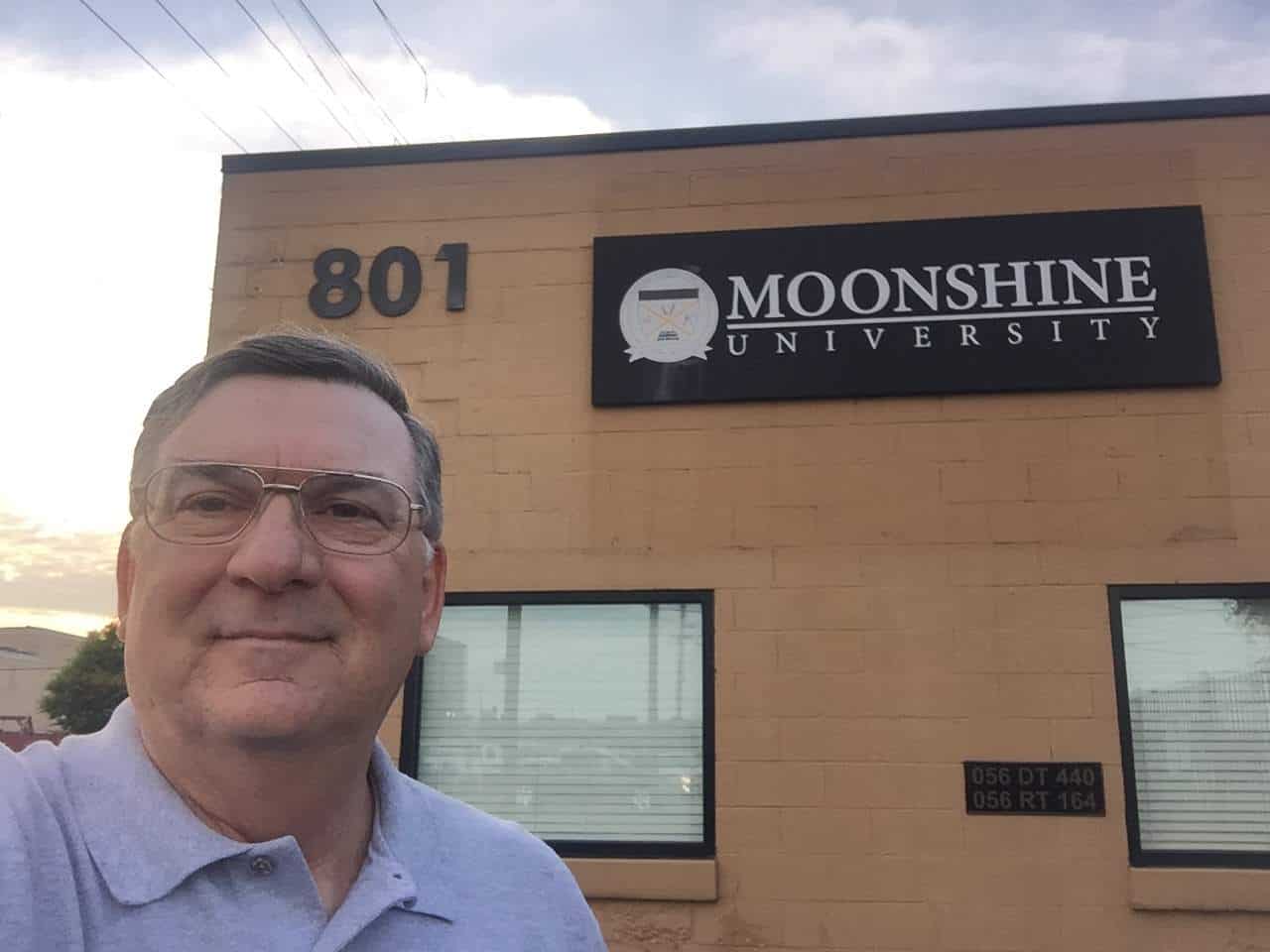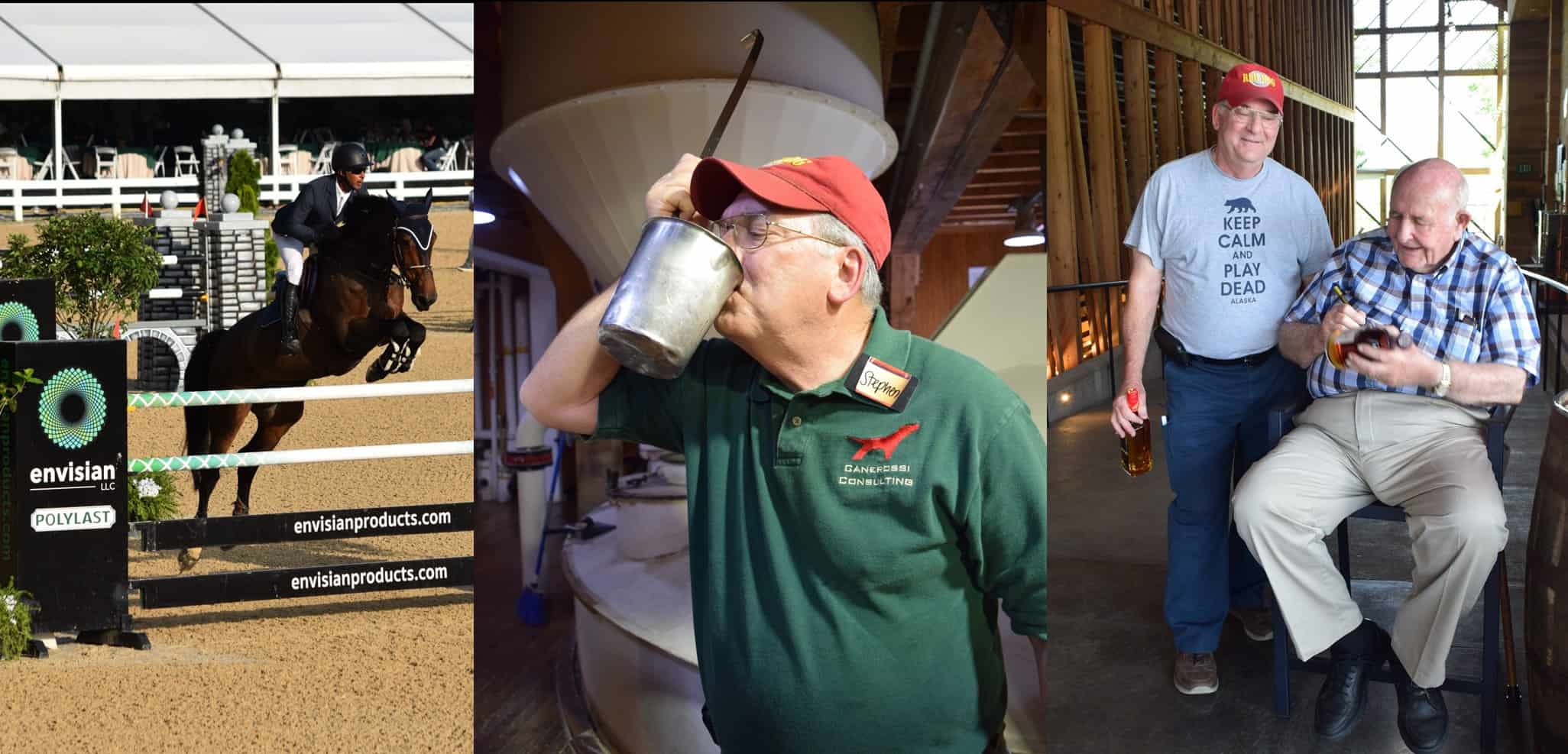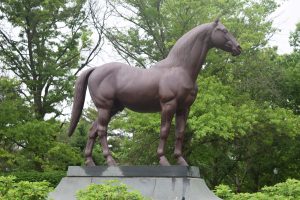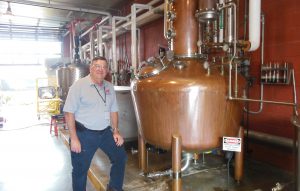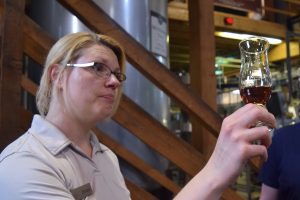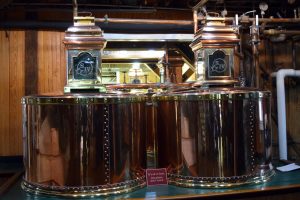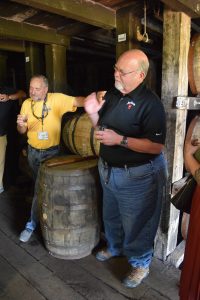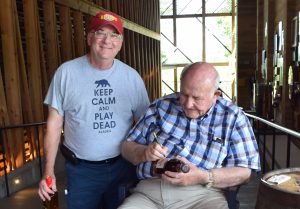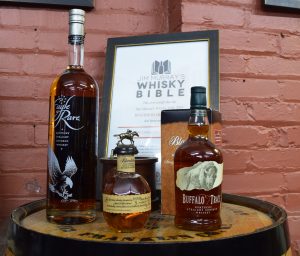I attended the Stave and Thief Society’s Executive Bourbon Steward class at Moonshine University in May 2018 as part of my Kentucky Thoroughbred and Bourbon Land Cruise. This is an all-day course consisting of classroom instruction and hands-on opportunities in the university’s working distillery.
Moonshine University at the Distilled Spirits Epicenter
The university is housed in the former Hagan Auto and Tire Shop, and is co-located with the Distilled Spirits Epicenter. The single story building is fairly small, about 4,500 square feet, and parking is very limited. The classroom area comfortably accommodated our class of 23 students. However, the still house was a bit cramped, with considerable jockeying around so we could all see what was going on.
The university’s official mission statement is to “Provide technical training and business management education for start-ups, industry professionals, and those looking for careers in the distilling industry.” What that means to me, based on my day there, is achieving two key objectives.
- Supporting the emerging craft distilling industry with educational and mentoring opportunities. As an example, the 6-Day Distiller Course at $6,250.00 covers a wide range of topics from how to get started in the craft distilling industry to how to distill rum, whiskey, vodka, and more.
- Supporting the overall bourbon industry, i.e., the mega producers and the craft distillers, by educating individuals in the hospitality industry.
As I noted in last post, my day at MU was fun and educational. Everyone involved in teaching us were experts in the field, and ensured all of us had the opportunity to earn our Executive Bourbon Steward credentials.
Becoming a Stave & Thief Society Executive Bourbon Steward
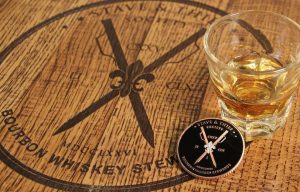
This certification program is the official bourbon education course of the Kentucky Distillers’ Association and is designed to support the association’s goals and objectives. To me, an Executive Bourbon Steward is a bourbon advocate with the knowledge and yearning to spread and promote the good word about bourbon. Being an Executive Bourbon Steward is all about helping others enjoy and buy more bourbon.
The Executive Bourbon Steward certification builds upon the Certified Bourbon Steward course. However, the lower level certification is not a prerequisite for becoming an ESB. Our primary instructor was Colin Blake, the university’s Director of Spirits Education. He was assisted in the still house by the university’s Operations Manager Tyler Gomez-Basauri. Both men did a fantastic job of teaching us about bourbon and distilling.
The day’s instruction was broken down into three separate, but very interrelated subject areas; the Stave and Thief Society’s Bourbon Body of Knowledge, practical experience in the still house, and sensory training.
Stave and Thief Society’s Bourbon Body of Knowledge
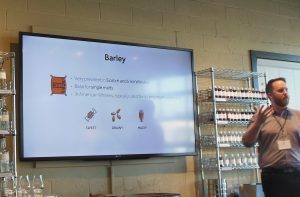
Colin was our classroom instruction throughout the day, and led us through the entire body of knowledge. Major topics areas included the various classifications of whiskey and their differences, the science and art of producing bourbon, to include aging and mingling or batching from different barrels to produce a finished product, and the history of bourbon and Kentucky’s important role in that history.
Colin provided much more detail and information about each topic than is contained in the Stave and Thief Society’s Certified Bourbon Steward book. Plus we were able to ask questions; lots and lots of questions. So many in fact that the class ran about an hour over our allotted time. Colin was very patient and answered all questions, and did not seem to mind staying late to do so.
Tastings were sprinkled throughout the day, which added variety and kept things interesting. My favorite tasting was a blind tasting of three bourbons that were distilled on the same day at the same distillery with the same mash bill then stored in identical charred oak barrels that sat side by side in the rickhouse for three years. Each smelled and tasted different, demonstrating the variability of the bourbon aging process. This also highlighted the distillers’ or blenders’ challenges in producing a consistent product that customers want to buy and drink over and over again throughout the years.
Basics of Distilling Whiskey Hands-On Experience
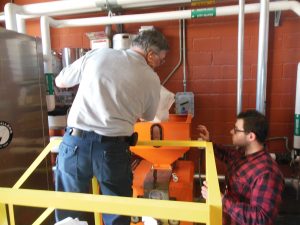
Throughout the day we stepped out of the classroom and into the still house for demonstrations and hands-on work with the distilling process. Each time we went to the still house we observed one step in the distilling process, and some of us were given the opportunity to participate.
First up was the hammermill to grind corn, rye, and barley. Some members of the class, including me, poured the grain into the mill. All of us had the opportunity taste and smell each grain as after it was ground to the right size. As the grain was coming off the hammermill we observed it being added to the water in the mash tun. Once the grain was sufficiently cooked, we connected a pump to the mash tun and pumped the mash over into the fermenter.
Prior to the start of the class, Tyler had placed a low wine distillate into the still, which was now heated to begin the distilling process. As the fresh whiskey flowed up through the parrot’s beak and into the collection tank we were able to smell and taste the distillate. This allowed us to differentiate between the heads, hearts, and tails and make the cuts are the right moment (or at least close to it, give or take a bit).
Sensory Training at Flavorman
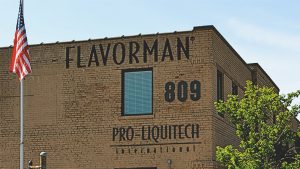
The classroom work was interesting and informative, and the hands-on experience in the distillery was great. I especially enjoyed tasting and smelling the fresh white dog and helping to decide when to make the cuts. However, our ability to appreciate and make sense of the tastings, and to know when to cut was enabled by our sensory training.
Our sensory training was provided by Flavorman, a separate but associated business right next door to Moonshine University. A short walk brought us to the Flavorman lab where some of the staff introduced us to the company. They then introduced us to our Bourbon Steward Sensory Training Kit, which was ours to take home. This kit retails of $250.00 in the Moonshine University or Stave and Thief Society online stores, so the $500 tuition for the day is a bit less painful. The kit is packed with 36 vials of different scents covering distillate odors such as acetaldehyde and acetone, “bourbon” aromas such as various fruits and woods, and the primary components of a bourbon mash bill such as corn and rye.
Our Flavorman sensory guides led us through the process of sampling each vial; ensuring we sniffed only – “No Sipping!”. They also helped us understand what we were smelling. A key part of this training was differentiating the distillate’s heads, hearts, and tails based solely on their unique smell. Our graduation exam was to identify each during a blind sniff test of the three samples. The staff told us that usually only 1 in 3 students would be able to pass this exam after the short sensory training we had that day. They advised us to practice at home with our kit. I am proud to say I passed the exam while there at Flavorman.
The Final Exam
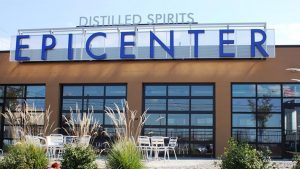
No university course is complete without a final exam, and the Executive Bourbon Steward course is no exception. The exam contained 50 multiple choice questions that covered the full range of the day’s activities and classroom work. I passed with a 98% score. Everyone who completed the day’s activities and passed the exam received a Stave & Thief Bourbon Steward lapel pin and an Executive Bourbon Steward challenge coin.
My day at Moonshine University was a blast, and my knowledge of bourbon was tremendously enlarged and deepened. Although at $500, plus travel and lodging expenses, it was expensive, it was totally worth every penny. Colin, Tyler, the Flavorman staff, and Christin Head, the university’s Registrar, were wonderful and completely committed to ensuring all of us were entertained as well as educated. I highly recommend this course to anyone who wants to gain a significantly better understanding of America’s native spirit.
